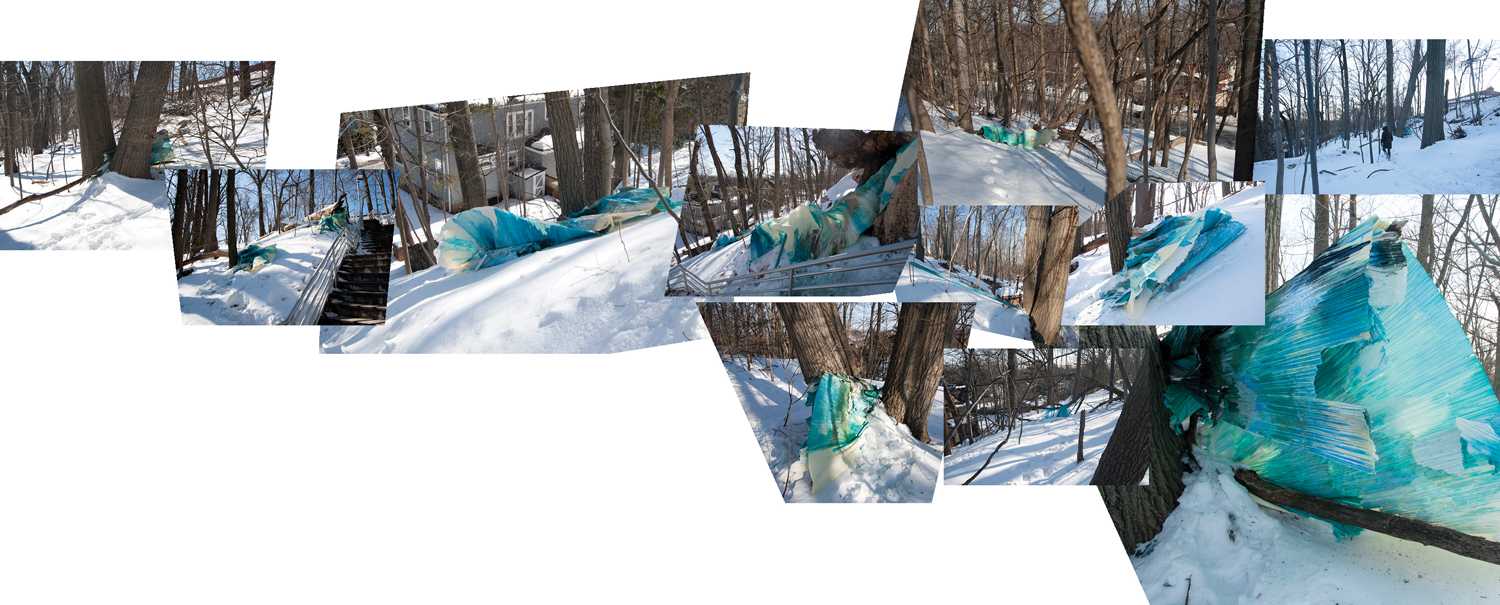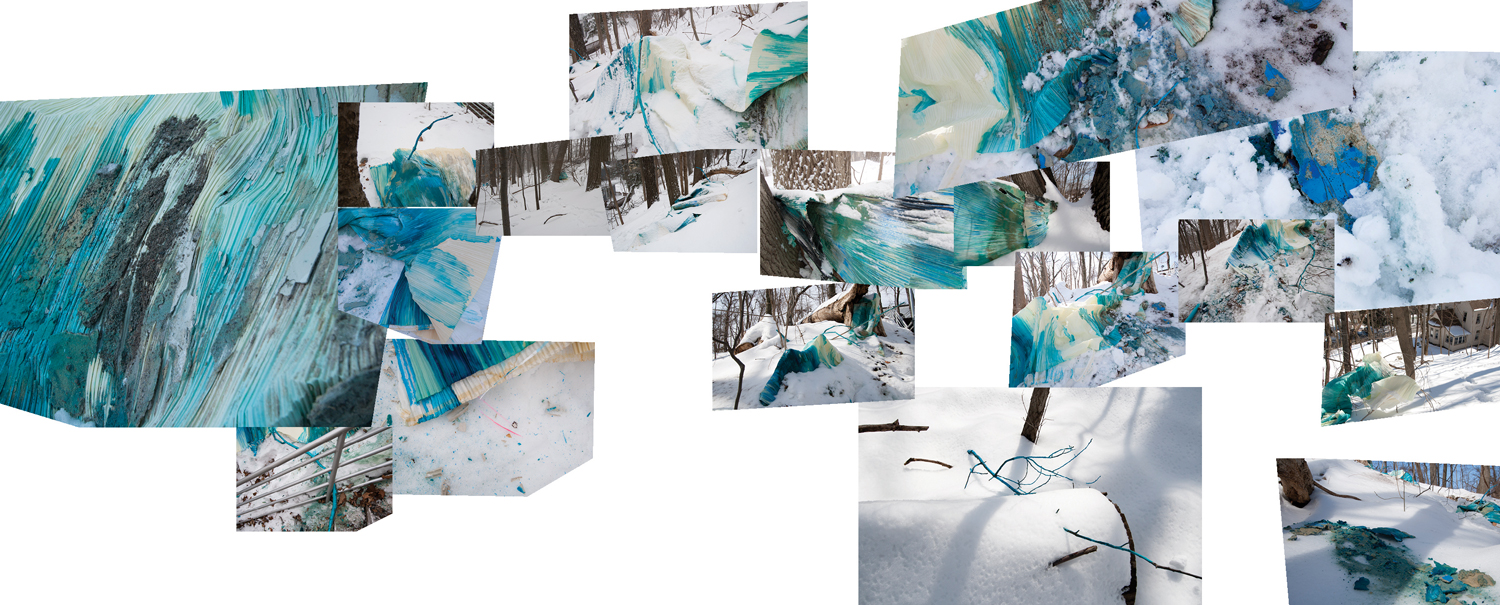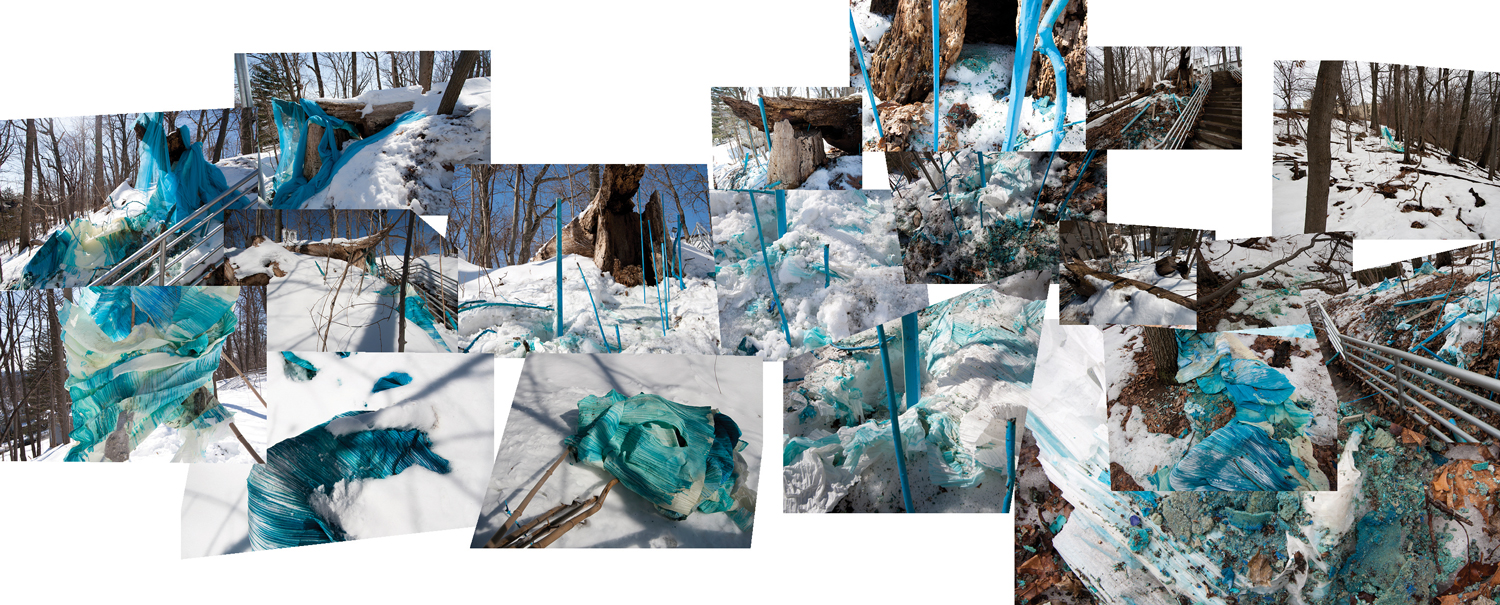When a tree falls, the sky falls, 2015
I am interested in the incidental movements caused by forces in nature, specifically those that are close to ruled/urban environments. In late 2014, during Phase I of the project When a tree falls, the sky falls, I documented events in parks like fallen trees, emerging tree roots against man-made lines, blocks of asphalt in the middle of a grass field, and others. I questioned the divide between the imposed organization of movement and one that happens because of forces in nature. In parks, the movements of both bodies (humans) and bodies of nature (trees, grass, rocks) are maintained and enforced. They are static and composed. When an isolated event like a fallen tree happens, nature makes a shift in the way of moving. Pathways become an observation point, and the space between trees encourages moving-through. The park visitor becomes aware of gravity, forces in nature, distance, weight and temporality.
Later in 2015, I continued this project in a forest hill area in Montclair, New Jersey. A forest was a different setting from a park. Fallen trees were everywhere, crossing each other, partitioning and making pathways. A staircase was cutting through the forest, allowing for transition and multiple viewpoints, and acting as a rule for a way of walking. The dialogue between the ruled and unruled environment was present.
Durational viewing revealed more forms: painted branches, sticks, paper tubes, and other forms made out of stained pleated fabric. Pigmented sand, crumbles of dried pigment, and small broken branches activated focused (zoomed-in) looking.










